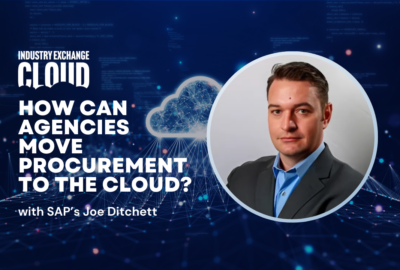Plan for AI to handle tax-return preparation
Millions of Americans are sweating over one of the most intrusive processes known to mankind. The IRS is in high gear as it prepares to process tax returns.
Millions of Americans are sweating over one of the most intrusive and convoluted processes known to mankind. The IRS is in high gear as it prepares to process tax returns. Everyone uses software, but what if artificial intelligence could cut through the tax tangle. The Federal Drive with Tom Temin spoke with someone who thinks the AI scenario is a distinct possibility: Dr. Tinglong Dai, professor at the Carey Business School at Johns Hopkins University.
Interview Transcript:
Tom Temin I want to talk about the IRS, which has this massive processing problem. And there’s lots of automated rules that check if the returns are correct. But you’ve studied how AI could help in this process. What are some of your thoughts here?
Tinglong Dai Well, first of all, it is helpful to define what AI is. So artificial intelligence is definitely more than just ChatGPT that most people are familiar with these days. The field has been there for almost 70 years. You can think of many different kinds of AI. You have rule based AI. If you can feed your machine all sorts of tax rules, deductions or laws, regulations, constraints and you will figure things out. That’s kind of how AI can be very useful, very reliable, very transparent, very easy to audit, very easy to figure out what went wrong. Problem with the traditional rule based AI is that it’s not, it’s a little bit too rigid. It’s hard to do things within a flexible way, especially when you have flexible formatted data such as images, pictures, and all data from many different sources. So then you have more recent kind of predictive AI, which by the way, includes all the OCR technology. You take a picture of your tablet to form, you figure out the numbers, it transmits those numbers into the text software. And that’s has become very, very reliable due to advances in computer vision over the past ten years or so. And then more recently, the kind of AI everyone gets excited about, obviously, is the ChatGPT. It’s that kind of large language models that can accommodate a more complex, more flexible kind of forms. If anything, I think large language models will definitely pull. Very powerful. We added tools, AI toolboxes that I use and all the tax prep software companies. Most consumers are already using these days, and we just make the process even more efficient and more reliable.
Tom Temin And you mentioned OCR capabilities that are up to date because OCR has been around a long time. But handwriting is really the tough part for OCR. And although handwriting OCR has actually been around for probably 2530 years anyway, the Postal Service uses it. But in the predictive model then it sounds as if that could help speed those returns that are still paper.
Tinglong Dai Absolutely. Especially when you think about a lot of consoles leaving the receipts, tons of invoices, bills and other different forms. You mentioned handwriting. These days we do not necessarily need to have handwriting, but sometimes it’s just as a format of the files, not what the software they are used to. The other day I try to use my phone to scan my U.S. passport because the expiration date is wrong. It says expiring year was 2051. That’s not possible. Nobody has a passport that that expires in 2051. So even something as basic as three and five, you got it wrong. And that was a printing on US passport. So this is where areas that have large language models can be helpful because that if you combine GPT technology such as ChatGPT with OCR, with computer vision you could figure out, well, 2051 doesn’t make sense. 2031 makes more sense.
Tom Temin Right. And when you get to the ChatGPT, the problem with that for most people is the fact that it’s trained with more data than a specific application would want it to be trained with. And if you limit your large language models to the data that’s pertinent, you’ll probably get more consistent results.
Tinglong Dai Correct. So most of, larger, longer models that consumers use these days are off the shelf. They have already been developed by major companies like Microsoft, Google, Facebook. But what they are not doing is that they have not been trained for the specific purposes, such as the text caps. So that means for these models to be useful, they need to be fine tuned. You need to fit it with the kind of rules that are necessary needed for text. But they are actually a challenge here is actually that, they are like human beings, in the sense that we’re good at figuring out what’s plausible, what makes sense, what doesn’t. But they make up a lot of stuff. So, like, at home, you and I was speaking now we make up a lot of things. It’s not like we make up things on purpose. It’s just that we’re never sure. Well, if I asked you, what was your AGI last year, you probably would make up something, because unless you actually look up your records, you wouldn’t know your exact number. That’s also the challenges with the number of models. Sometimes what they make up happen to be true? A lot times they could hallucinate. And also they’re not really good at calculating stuff, just like we humans. And we are very bad at calculating things.
Tom Temin We’re speaking with Tinglong Dai. He’s professor at the Carey Business School at Johns Hopkins University. And getting back to rule based AI. Of course, the tax code is thousands of pages and there are literally well, there are unlimited variables. I guess somebody could count the variables, but I think there’s unlimited numbers of variables in tax return data. So when does rule based logic simply saying if and types of calculations, even millions of them, change from being just regular logic to becoming artificial intelligence?
Tinglong Dai Yeah, that’s actually one of the essential questions in artificial intelligence is to figure out how to make those rules work. And if a study goes on reading on the paper, that’s the easy part. But if you actually talk to a tax expert, if you’re observing them for a week of amount for a year, you would know that a certain unwritten rules, that certain rules are not written because there are all sorts of ambiguities. And how do we make a determination about when come deductions and versus the other? How do you decide what should be feeding that particular part of the form, which often the truth is not always. So that’s where we need human expertise. So a part of essential challenging in artificial intelligence between 1950s to 1990s, or even now, this kind of rule bets of AI is to try to infer those rules based on your observation of how experts are raising, how experts decide, how experts act. So that’s an essential challenge. It’s fair to say we haven’t made progress in that area a lot. The reason, rule based AI hasn’t been as useful as it could it be. It is not because that figure out the rules or codified rules or as, Tom, as you mentioned, is if that includes that part. Well, very good at it. The part we’re not really good at is act as a part of understanding data, understanding a lot of unstructured data, especially when look at the images, speeches and natural language. That is part of rule based AI the’re really bad at. They are not really good at processing. Also, the inputs, they are also not very good at generating outputs. That makes sense that it is actually very useful to users that it was really met. The reason rule base AI hasn’t taking off. But when you combine rule based AI with large and working models, with computer vision models, that can be very, very useful.
Copyright © 2024 Federal News Network. All rights reserved. This website is not intended for users located within the European Economic Area.
Tom Temin is host of the Federal Drive and has been providing insight on federal technology and management issues for more than 30 years.
Follow @tteminWFED






